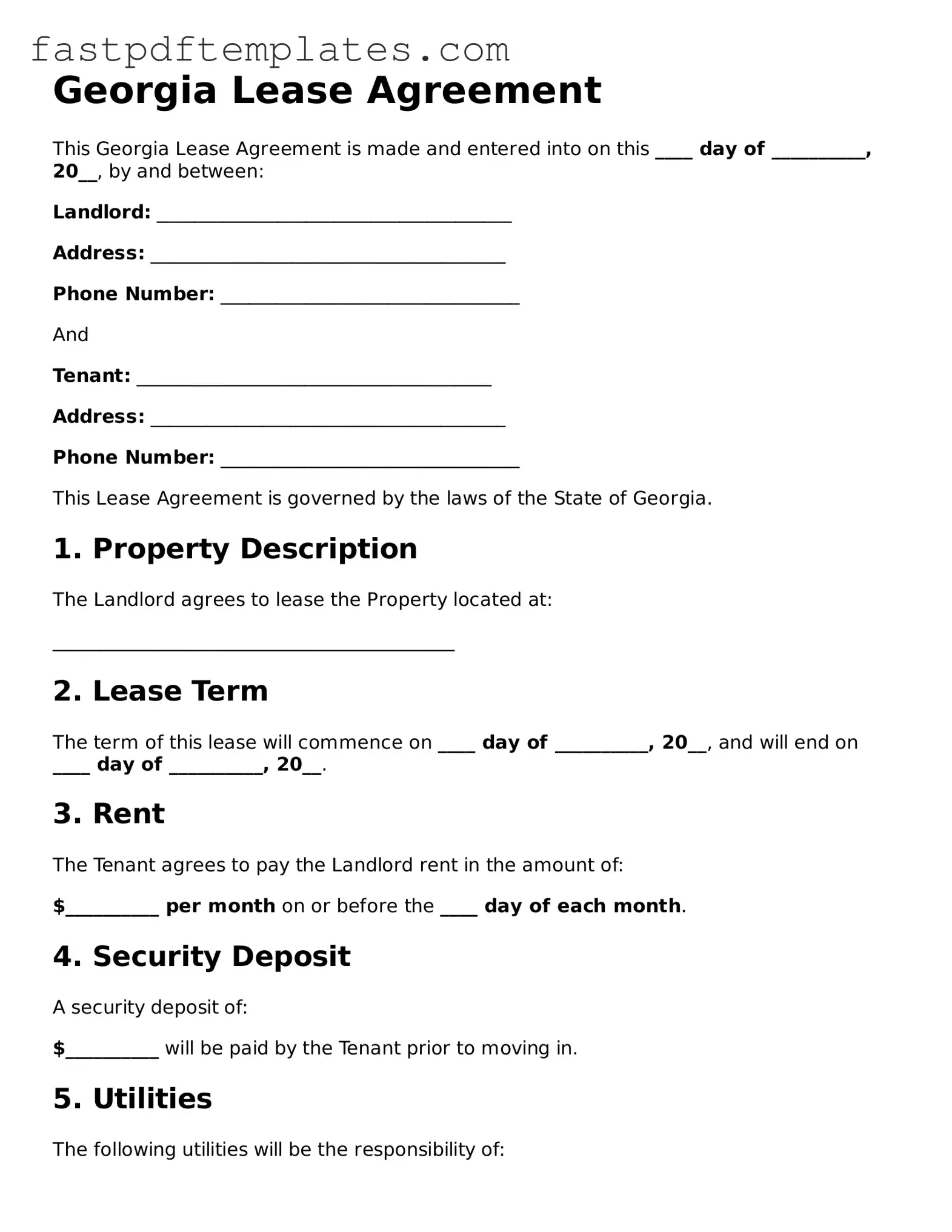Georgia Lease Agreement
This Georgia Lease Agreement is made and entered into on this ____ day of __________, 20__, by and between:
Landlord: ______________________________________
Address: ______________________________________
Phone Number: ________________________________
And
Tenant: ______________________________________
Address: ______________________________________
Phone Number: ________________________________
This Lease Agreement is governed by the laws of the State of Georgia.
1. Property Description
The Landlord agrees to lease the Property located at:
___________________________________________
2. Lease Term
The term of this lease will commence on ____ day of __________, 20__, and will end on ____ day of __________, 20__.
3. Rent
The Tenant agrees to pay the Landlord rent in the amount of:
$__________ per month on or before the ____ day of each month.
4. Security Deposit
A security deposit of:
$__________ will be paid by the Tenant prior to moving in.
5. Utilities
The following utilities will be the responsibility of:
6. Maintenance and Repairs
The Tenant agrees to maintain the Property in good condition. The Tenant must notify the Landlord of any necessary repairs.
7. Termination
Upon termination of the lease, the Tenant must vacate the Property, returning it in the same condition as received, normal wear and tear excepted.
8. Governing Law
This Agreement shall be governed by the laws of the State of Georgia. Any disputes arising from this Agreement shall be resolved according to Georgia law.
9. Signatures
By signing below, both parties agree to the terms outlined in this Lease Agreement.
Landlord Signature: ________________________________ Date: _______________
Tenant Signature: _________________________________ Date: _______________
